WELCOMING CARRUTHERS
By Monica Kass Rogers
WORDS AND PHOTOGRAPHY BY MONICA KASS ROGERS
LFOLA President Ryan London with Court and Kirstin Carruthers and Carruthers Preserve Project Manager, Jason Quigley
By Monica Kass Rogers
WORDS AND PHOTOGRAPHY BY MONICA KASS ROGERS
LFOLA President Ryan London with Court and Kirstin Carruthers and Carruthers Preserve Project Manager, Jason Quigley
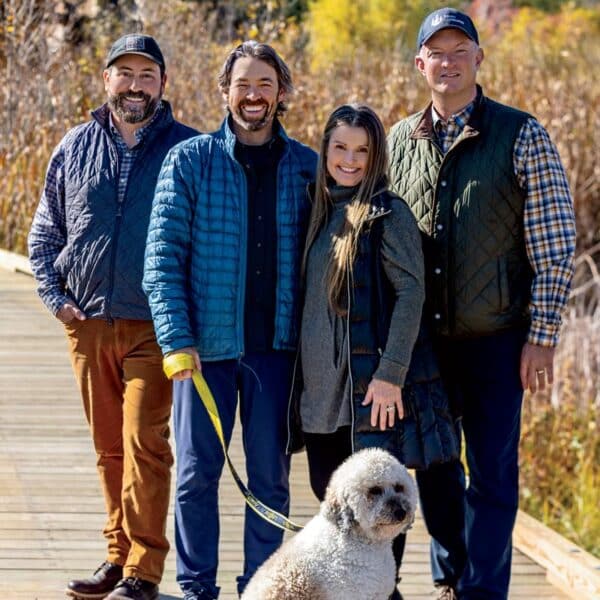
Walking the pristine curving trails of the just completed Carruthers Nature Preserve in Lake Forest, Ryan London’s celebratory enthusiasm is infectious.
It’s understandable: London, Lake Forest Open Lands Association’s (LFOLA) President and CEO, has been working with his team to make Carruthers Preserve a reality for nearly 20 years.
First, there were the negotiations that had to happen for the nonprofit to acquire the 17-acre parcel, and then came a decade of collaboration with designers, ecologists, engineers, volunteers, landscapers, and builders to restore the land to its native beauty—now accessible to all.
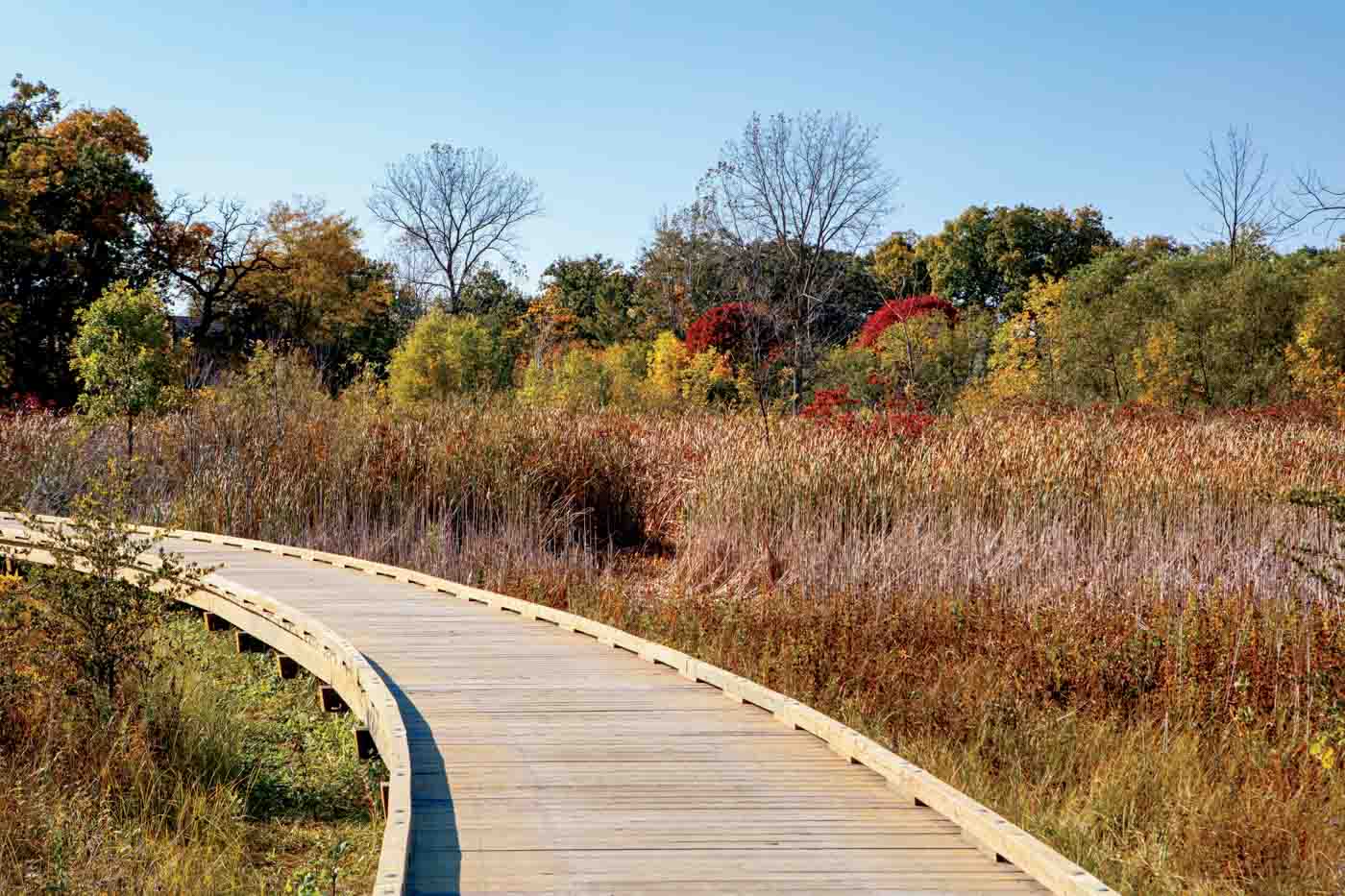
The newest link in the 7-½ mile corridor of protected lands that stretch from Half Day Road at the south to Rockland Road to the north, the preserve is important ecologically. An interwoven patchwork of prairie, wetlands, grasslands and lake, the preserve sustains many species of plant and animal life, making the land an oasis amid the residential areas that surround it.
Birds are everywhere.
“Yes!” says London, “Carruthers is in the middle of a major flyway. More than 52 bird species—some of them quite rare to see—come through here. There is a great population of red headed woodpeckers, we’ve seen bald eagles, and even whooping cranes.”
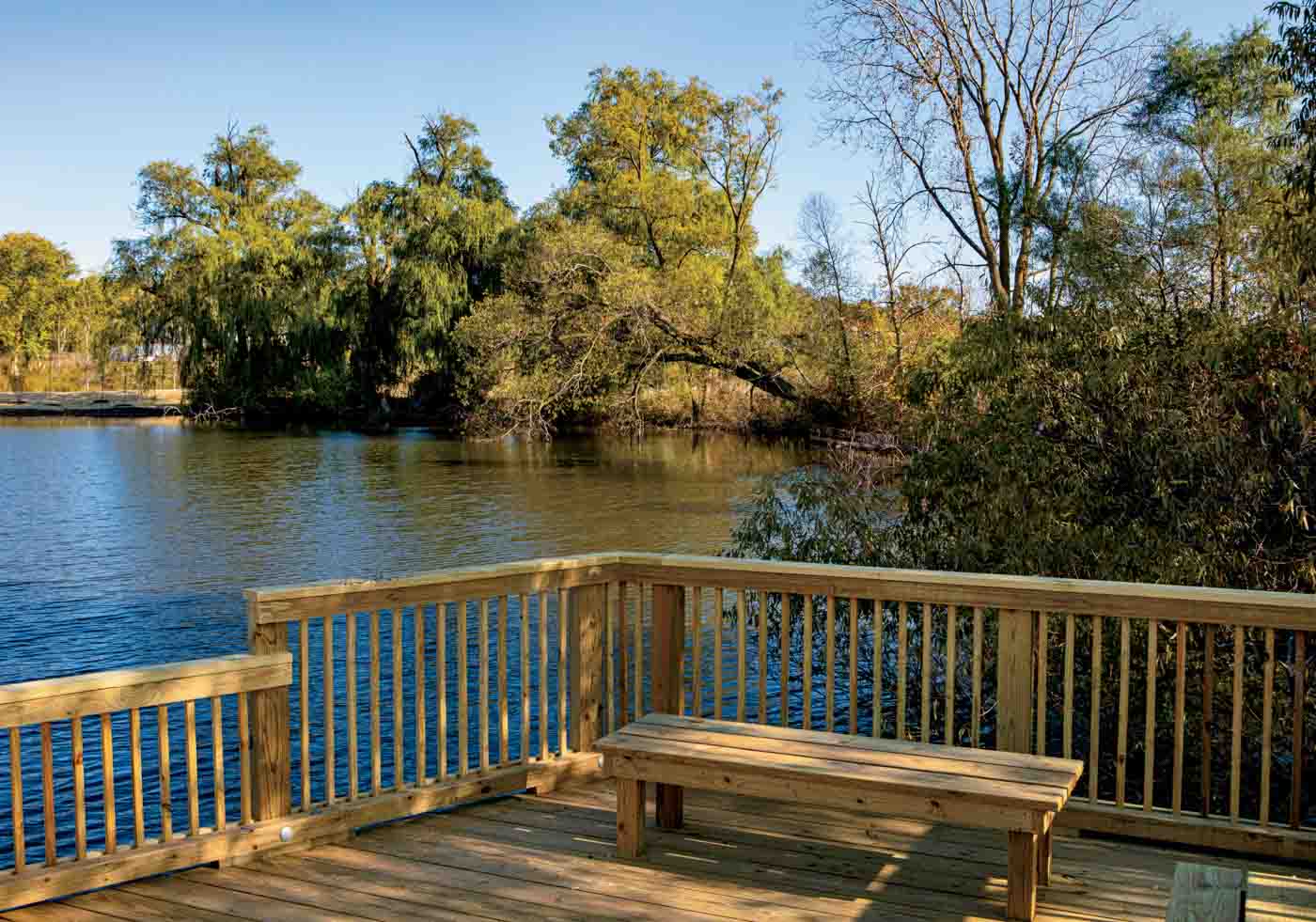
Nearby, the purple martin house donated by the Lake Cook Audubon Society as part of a volunteer challenge grant to support Carruthers, punctuates London’s point.
As we cross the prairie path along with LFOLA Board of Governors member, Court Carruthers, his wife Kirstin, and project lead Jason Quigley, London points out the big blue stem, Virginia mountain mint, cream gentian, and milkweed that dot the landscape.
“And these are just a few of the preserve’s indigenous flowers,” he says.
Expanding on this, Quigley, CEO of Wright Landscape, discusses the 170 native trees, plus shrubs and plants that are being added to the land now that much of the invasive buckthorn has been removed. Deep work to correct water flow throughout Carruthers, combined with the removal of undesirable plant growth that had shaded and kept the natural seedbed from geminating, means that the native plants will now have the chance to thrive.
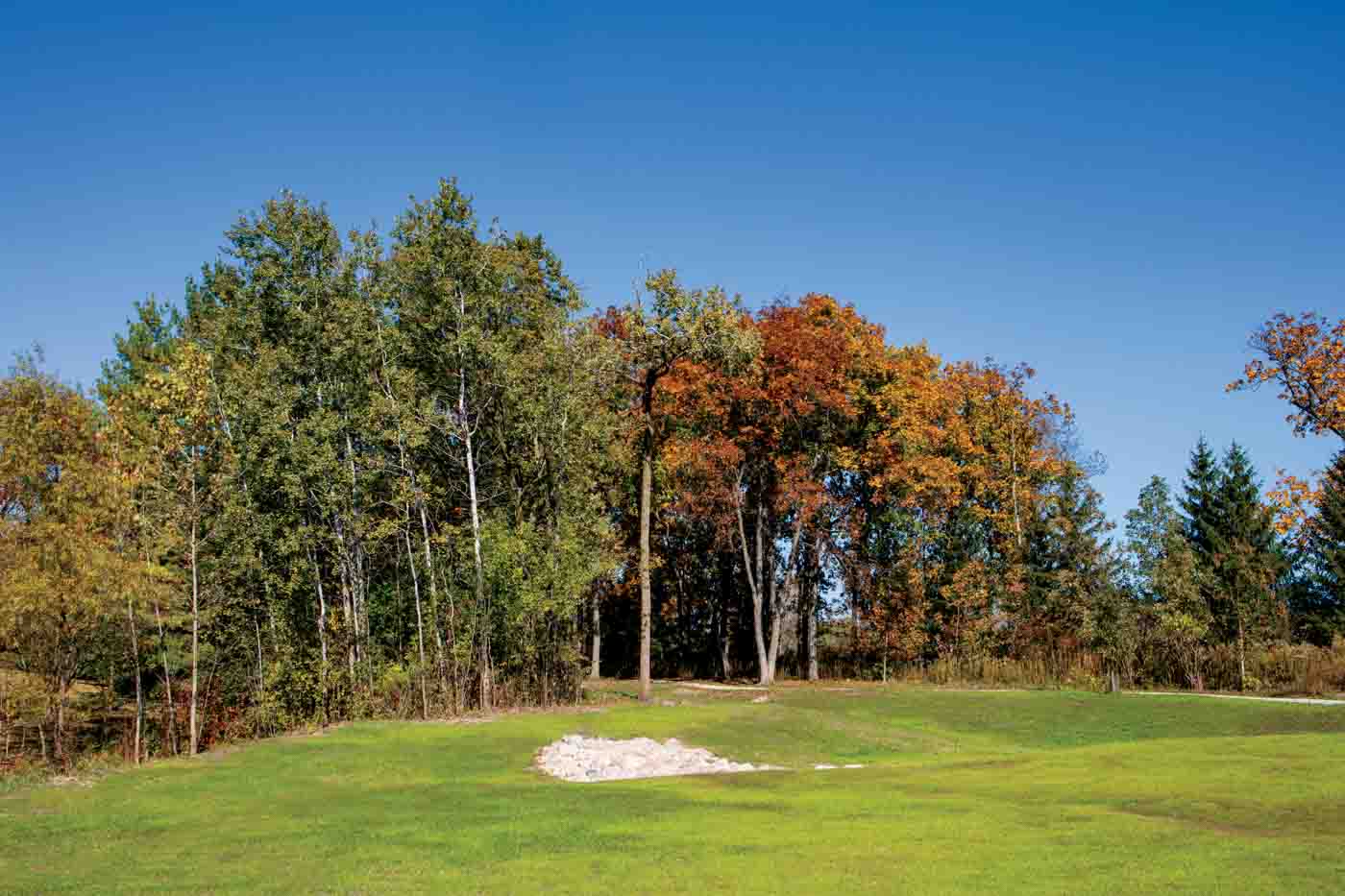
“We utilized best-management practices to access water that was previously trapped underground in old agricultural tiles and drainpipes,” Quigley explains.
Each area of the preserve has its own plant diversity. Working as a project partner on numerous LFOLA projects over the last 27 years, Quigley has learned volumes about indigenous species.
“Also, because I’ve lived immediately adjacent to the preserve for the last 11,” he adds, “preserving this piece of land was not only important as a service to the community but was also personally meaningful to me.”
Reaching the trail’s end, we step out onto a broad wooden deck and accessible fishing pier with views over Reilly Pond. For Kirstin Carruthers, it’s perhaps the most special feature of the preserve.
“When I learned that the preserve included this pond, I was thrilled!” she says. “There was no public access to it before. But now, my kids, their friends, and anyone in the community can come out here to fish, or just to enjoy looking out over the water.”
The Carruthers, who live near the preserve, say they walk LFOLA trails every day, refreshed and invigorated by the landscape and their encounters with deer and other wildlife along the way. In fact, the preserves were such a saving grace for the couple throughout the pandemic, Court stepped up to become a LFOLA board member immediately afterward.
“We have always loved these open lands,” he says. “We wanted the opportunity to preserve and tie more of these lands together, so that more people could enjoy and have access to their quiet beauty.”
Adding to the grants and donations that make the independently funded organization’s work possible, the Carruthers funded the construction of trails, bridges, and the accessible fishing pier. They also provided an endowment for ongoing maintenance of the preserve, “to ensure it would be properly kept for future generations,” says Court.
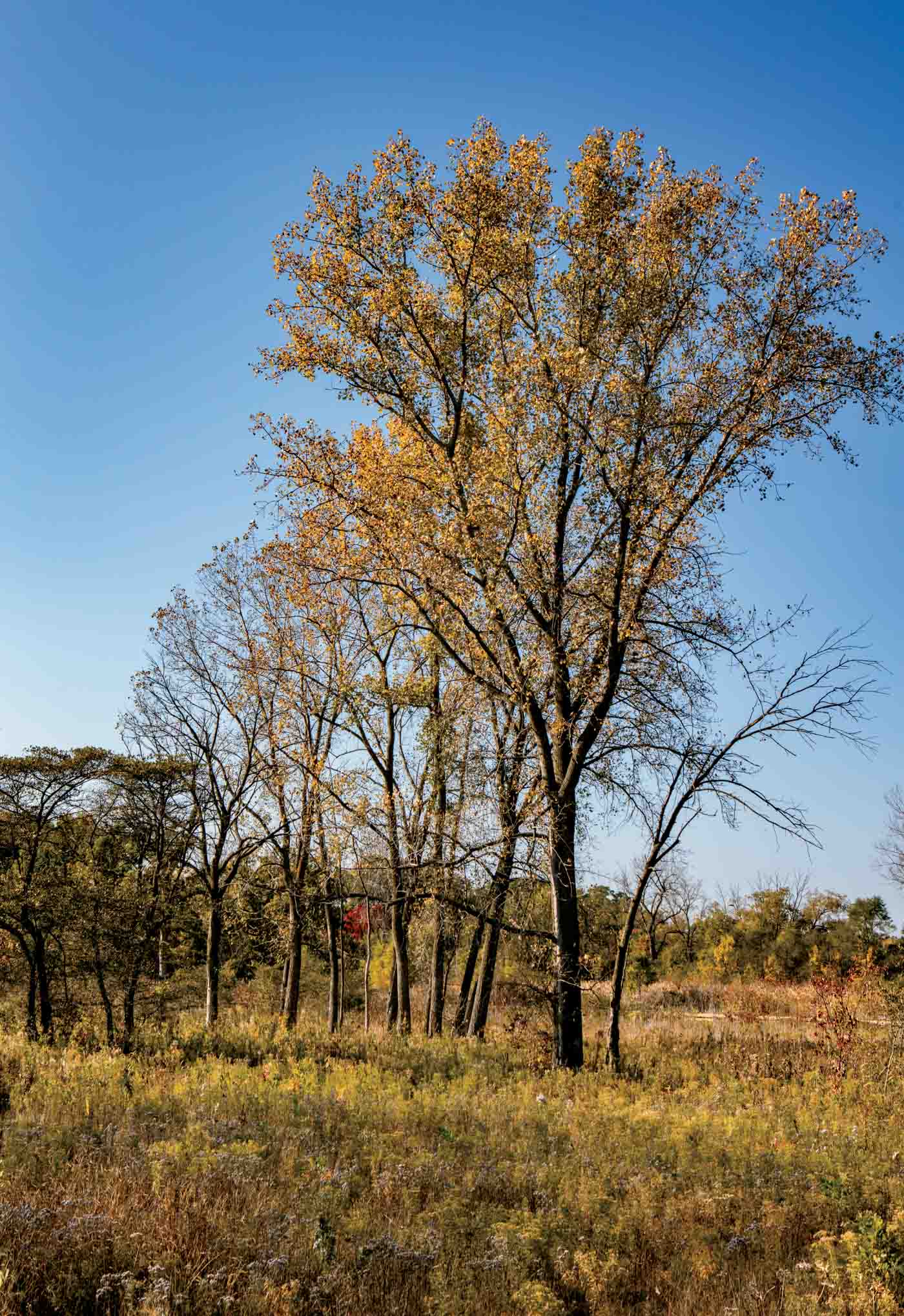
Just now, stands of trees in the preserve are bright with fall color. There are shagbark hickories, quaking aspens, cottonwoods, and many kinds of oak. “Oaks are the cornerstone tree species of our area,” says London.
As cold weather arrives, the preserve’s trails, which are fully wheelchair accessible, will not only give visitors peaceful snowy walks, but can be used for cross-country skiing. And linking Carruthers to the West Skokie Nature Preserve across Westleigh Road, a new pedestrian entrance is being built.
In the spring, infrastructure work done to direct water flow from the neighborhood into a course way through Carruthers, will result in a new wetland.
“It will hold water seasonally and then during storms, will rush through and over to the Middlefork via a big above ground conveyance,” London explains. “So, come spring, this little wetland area will be ringed with wildflowers, and full of dragonflies, frogs, salamanders … all those things that we love.”
In sum?
“The new Carruthers Preserve is an incredibly special local natural landscape,” says London. “It’s one more step in our mission to preserve and steward the region’s open spaces, and to enrich our community with programming that helps them feel welcome and able to enjoy and experience nature.”
LFOLA is a nonprofit organization that receives no funding from local taxes or the City of Lake Forest. For information about volunteer opportunities and educational programs, or to support its ongoing work, visit lfola.org.
Sign Up for the JWC Media Email